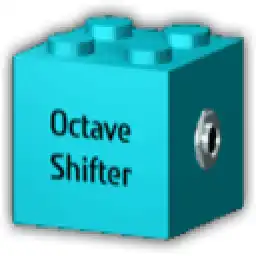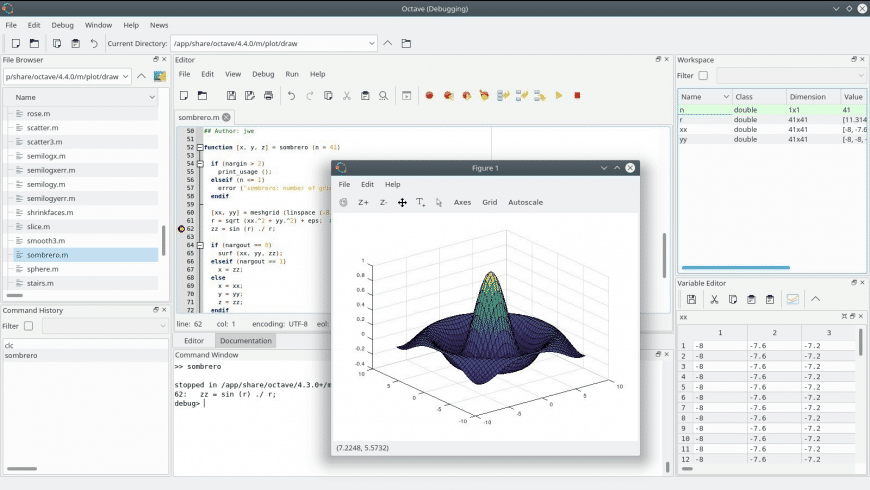Octave (itch) Mac OS
Most of the time, installing things with MacPorts is pretty easy; however, I have found that GNU Octave can be a little tricky. That being said, it's still pretty easy to get Octave up and running in both Snow Leopard and Lion. North americans - legends mac os. Escape the keyboard mac os.
Roblox Noob OS V. Based on a video 'Roblox Noob OS'. (In MAC OS not everything works well). Learn more about the history and purpose of Octave Forge in the interview at SourceForge's Blog. Installation Refer to the GNU Octave web site for information about how to install GNU Octave itself on your specific OS.
- Tcl game software, free download. Tcl Tool Command Language (Tcl) is an interpreted language and very portable interpreter for that langua.
- Page 3 Woctave-another gui front end. Anyone know woctave?. I just found today. It look like guioctave,but opensource.
At the time of this post, here's two version of Octave to choose from: octave (version 3.2.4) and octave-devel (version 3.4.3). For my money, I like octave-devel. In my brief testing with the two, the biggest difference for me was that the graphs plotted in octave-devel looked more like their OS counterparts. With octave, I found the scaling of elements on the graph to be different sizes and that bugged me.
To install Octave, run the following from the terminal:
And then wait..as there are a lot of things that need being compiled.
I added the gcc45variant because one of the dependencies, atlas, needs gcc45 to compile. This ensures that both of those are in sync.
Feel free to add other variants if you like, like X11 support or offline documentation. To get a full list, run:
Plotting
When you install Octave via MacPorts, AquaTerm also gets installed. AquaTerm is basically a vector renderer which Octave can use to plot its graphs. I like AquaTerm because the graphs look really smooth and nice, like you would expect on a Mac :)
If you have installed the X11 variant, you can also choose to do the rendering from within X11. The way you control this is through the environment variable, GNUTERM.
Set GNUTERM to x11 when you want to do your graphing in X11 and set GNUTERM to aqua when you want to do your graphing in AquaTerm. You can read more about setting environment variables on StackOverflow.
If you are running Octave and wish to change the GNUTERM there, you can do so with the setenv function, like so.
With this, you can also compare the different rendering apps and discover which one you like more.
Posted on July 11, 2019 by Paul
In this article, I will show you how to install and get started with GNU Octave on macOS. In order to test the installation and to exemplify the usage, I will show you how to use Octave for a simple image processing application.
At the time of this writing, the latest stable version of Octave is 5.1.0. Unfortunately the graphical interface of Octave 5.1.0 is buggy on macOS and tends to freeze randomly. If you are OK with using the CLI interface of Octave, you can use version 5.1.0. See the second part of this article for a quick how to install and setup.
Since most Octave users will prefer the GUI interface, I will first show you how to install Octave 4.4.1, which seems to be more stable than 5.1.0 on macOS when used in GUI mode.
I assume that you have the Command Line Tools installed on your machine. If this is not the case, write the next command in a Terminal and accept the defaults:
The article consists of three parts:
At this time, there is no official installer for Octave for macOS. In order to install 4.4.1 we are going to use the Octave.app build. Go to the Download page and get the Current Release of Octave. You should end up with a file named Octave-4.4.1.dmg in your Downloads folder.

Version 4.4.1 depends on OpenJDK 11.0.2+9 which you can get from the OpenJDKarchive. Make sure that you pick the exact version mentioned before. In order to install OpenJDK 11.0.2, open a Terminal and execute the next commands:
Once you’ve installed the required version of Java, you can proceed with installing Octave. Double click on the dmg file, accept the license and drag the app to your Applications folder. Since this is a third party unsigned build, first time when you start Octave you will need to right click the app and select Open.
You’ll also need to instruct Octave to use the GnuPlot graphics backend for plotting graphics. The default qt backend seems to be pretty buggy on macOS. In order to do this, you’ll need to create a .octaverc file in your home folder and put the next two lines in this file:
A simple way to do the above is to run the next commands in a Terminal
Restart Octave in order for the above to take effect.
At this point, you should be able to use Octave normally and use the menus to select the working folder, open, save files and so on. Go to the last part of this article if you want to see an example of using the app. Rooms (shaked lokits) mac os. Eden (jt333x) mac os.
At this time, there is no official installer for Octave for macOS. In order to install 5.1.0 we are going to use the Homebrew package manager. If you don’t have Homebrew installed, you can install it by running the next command in a Terminal:
Start by making sure that your Homebrew installation is up to date:
Octave (itch) Mac Os Catalina
Finally, install Octave on your system:
The above command will take some time, because Octave depends on a lot of other libraries. Once the installation is finished, you can invoke the Octave interpreter with the octave command in a Terminal:
If you really want to start the GUI interface, keep in mind that, at least for version 5.1.0, this is pretty unstable, use:
You’ll also need to instruct Octave to use the GnuPlot graphical backend for plotting graphics. The default qt backend seems to be pretty buggy on macOS. In order to do this, you’ll need to create a .octaverc file in your home folder and put the next two lines in this file:
A simple way to do the above is to run the next commands in a Terminal
Octave (itch) Mac Os X
Restart Octave in order for the above to take effect.
At this point, you should be able to use the Octave CLI interface normally.
If you want to evaluate an existing Octave script, you can do it in a few ways. I’ll assume that you have a file named demo1.m in your current folder.
First start the interpreter and than run the script from an interpreter prompt:
Octave (itch) Mac Os Pro
The second option is to run the script when you start the interpreter and after the script is finished you will be back at the interpreter prompt:
If you just want to run a script and exit when done, simply use:
In the final part of this article I will show you how to install the Octave image processing package. This should work the same for Octave 4.4.1 or 5.1.0. Start Octave and write the next command at an Octave prompt:
The above will install the image package for Octave. You need to run this command only once after which it will remain installed on your system.
By default, Octave doesn’t load a newly installed package when you start it. In order to use an existing package, use the next command at an Octave prompt:
If you want Octave to always load an already installed package, add the load command to your .octaverc file, e.g. by running in a Terminal:
Next time when you will start Octave it will also load the image package.
Download clouds.jpg to your working folder and run the next script (I assume that you’ve already installed and loaded the image package):
This is what I see if I run the above script on my Mac in the Octave 4.4.1 app:
